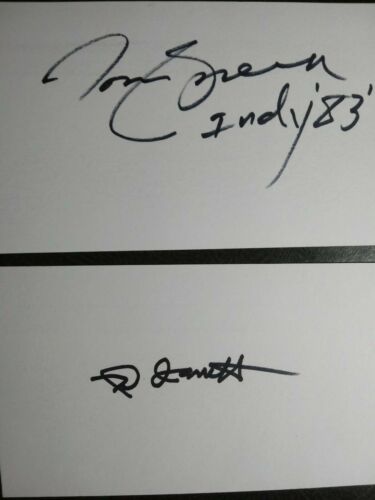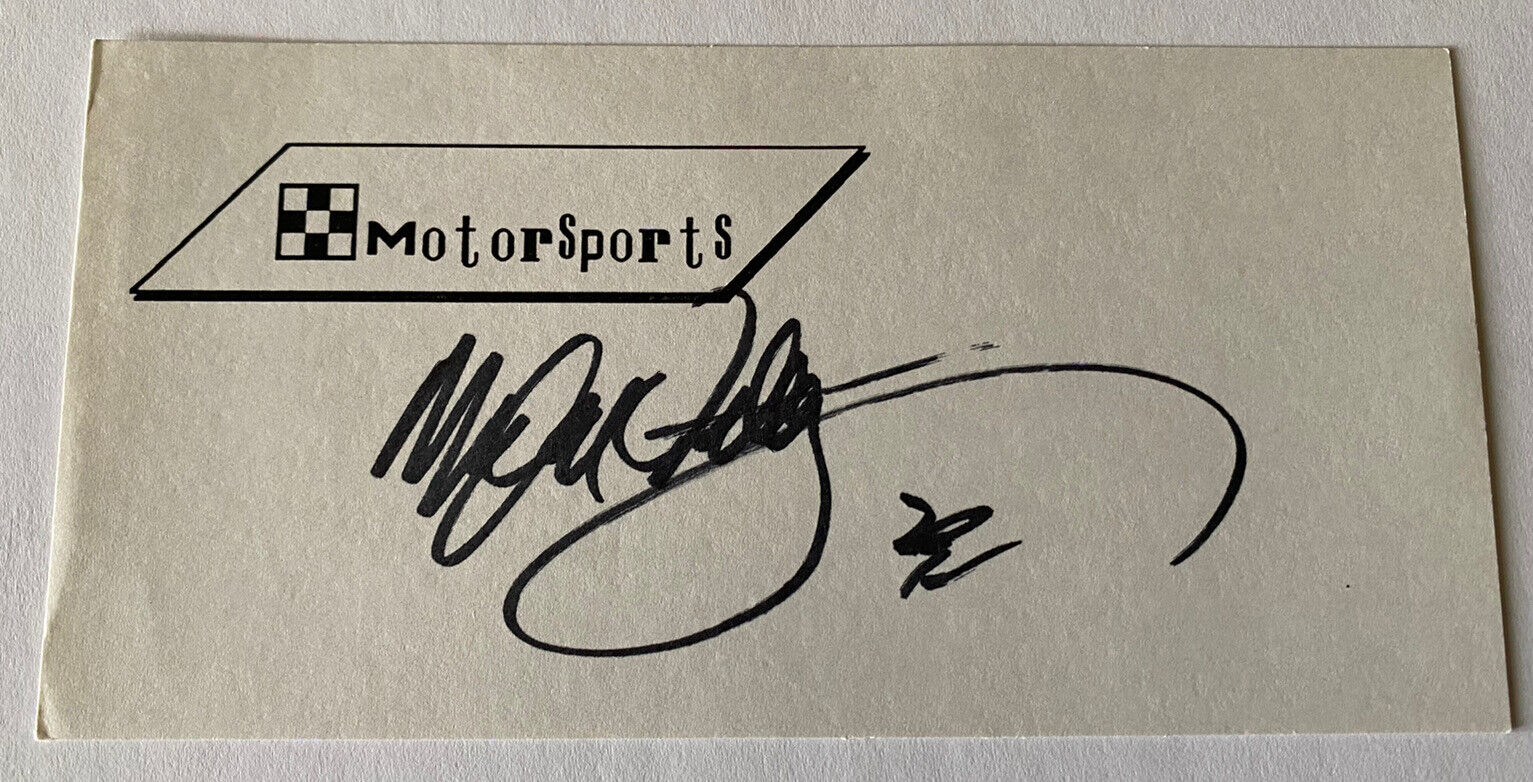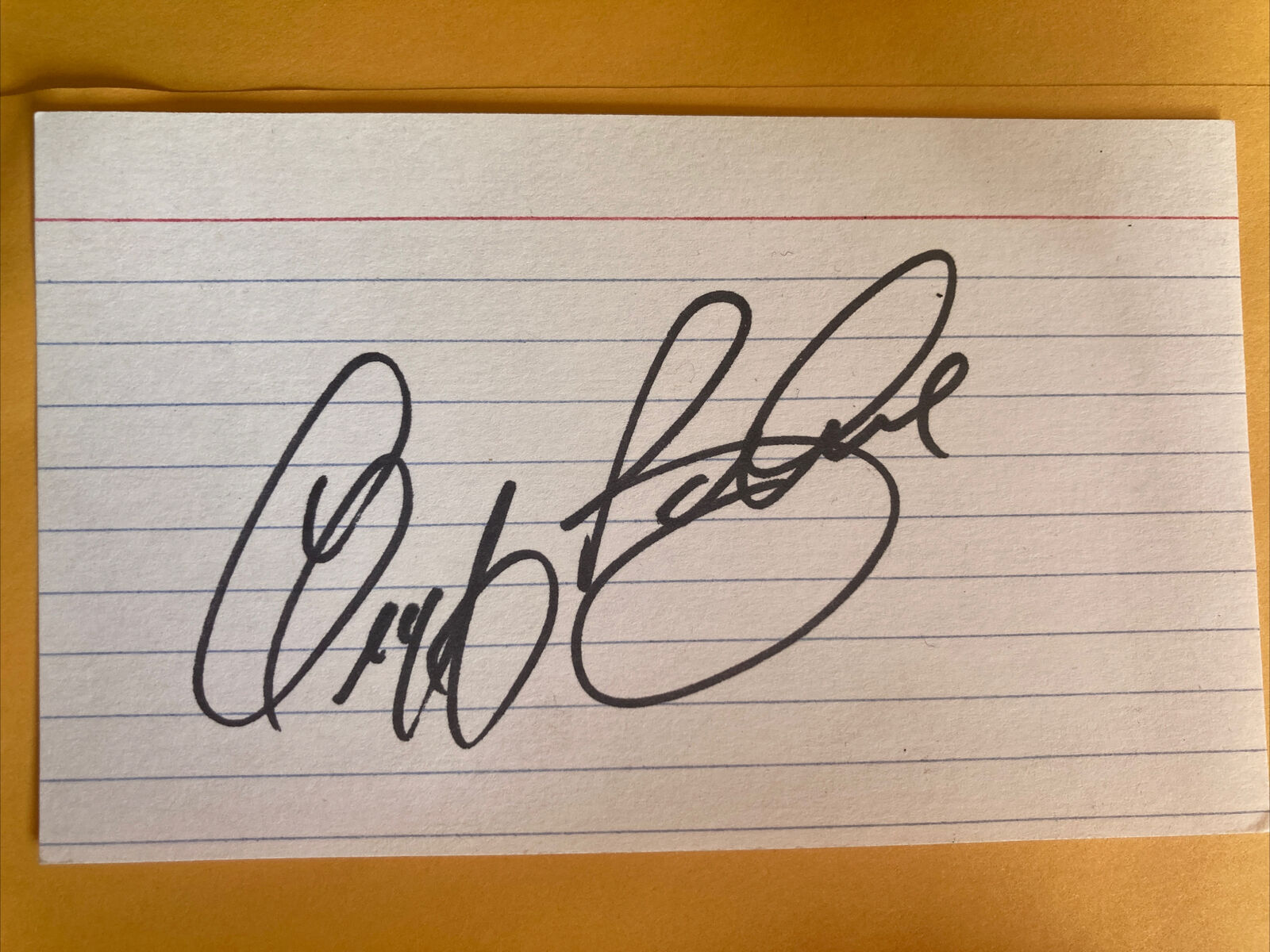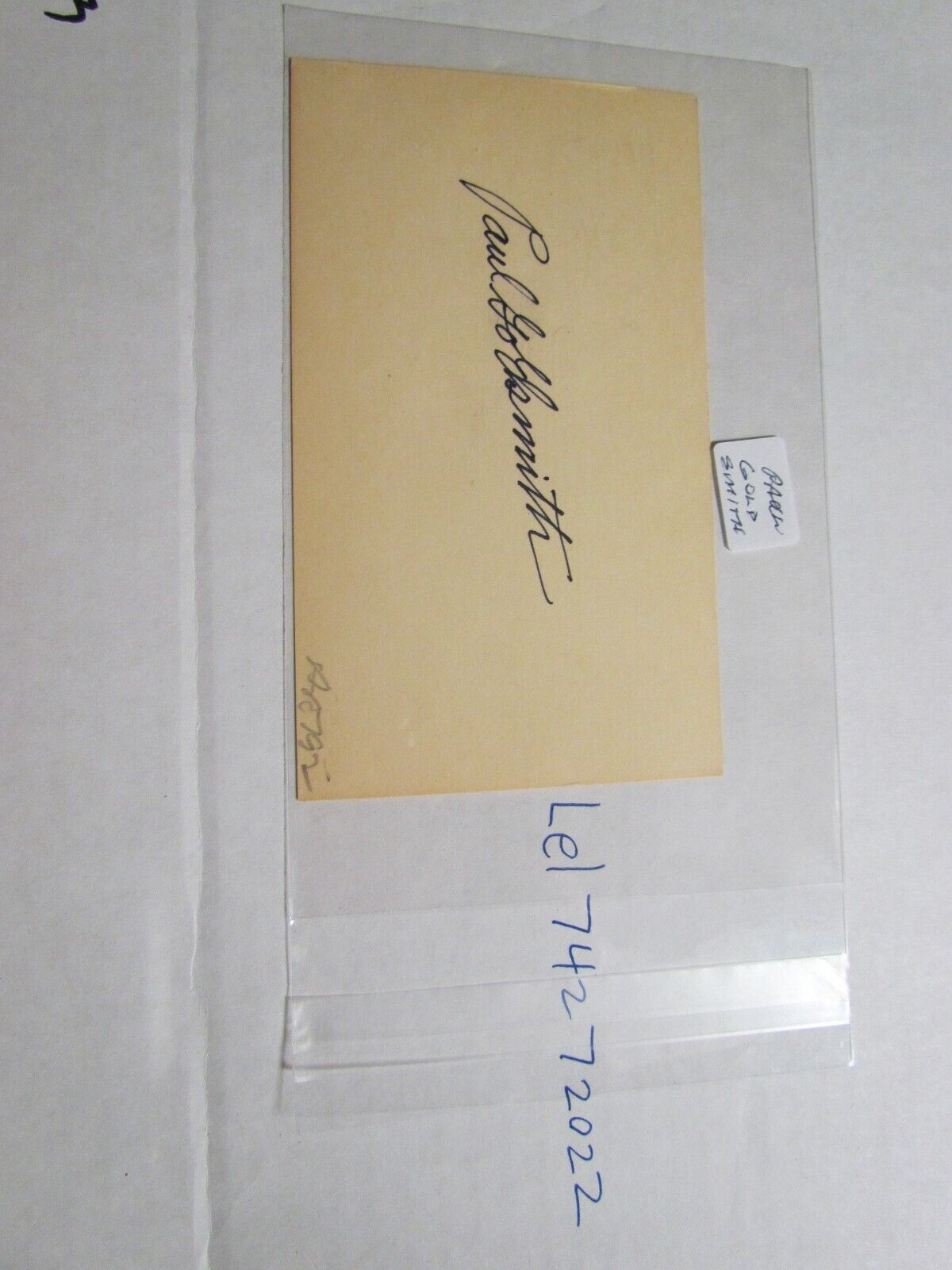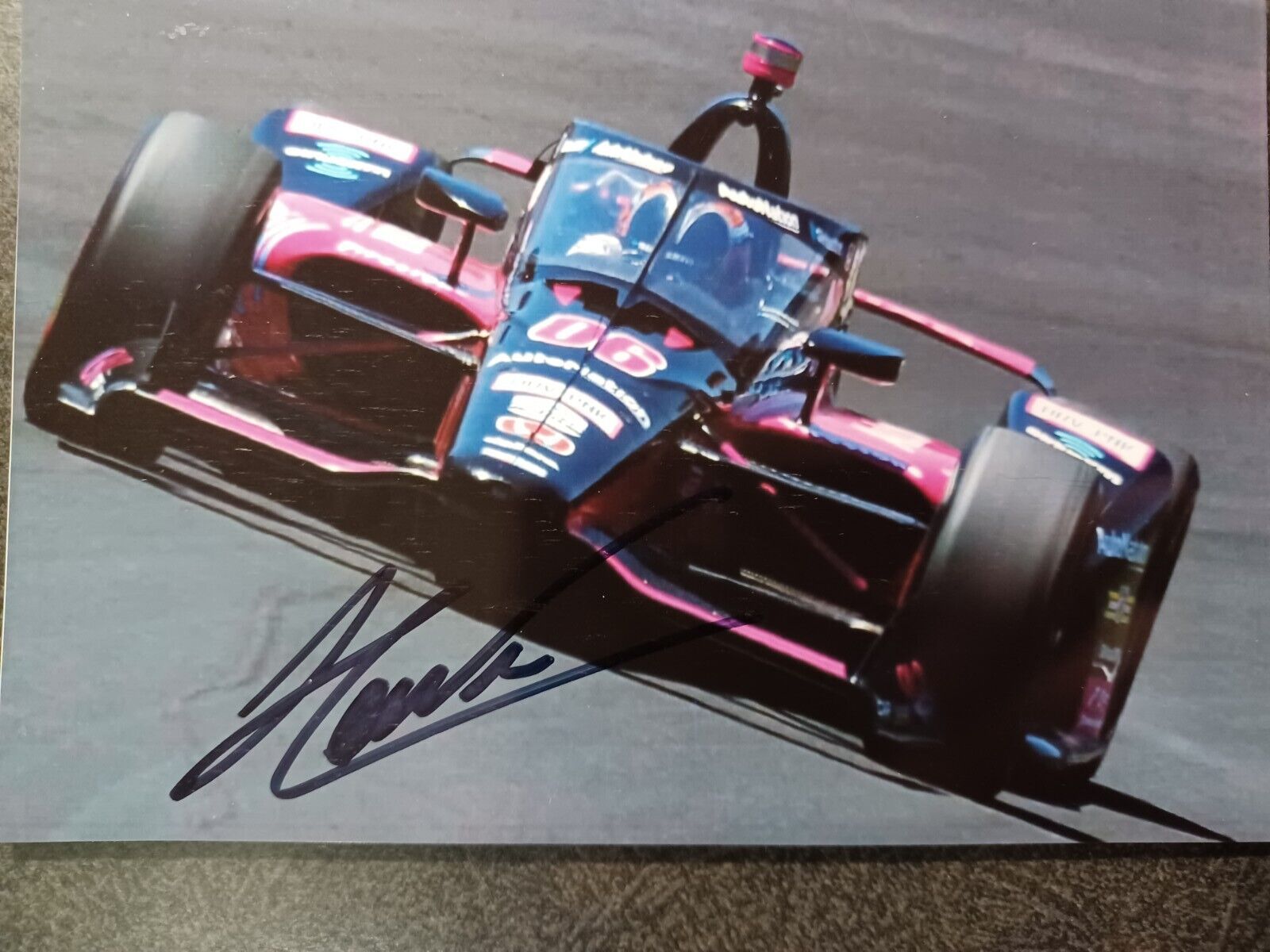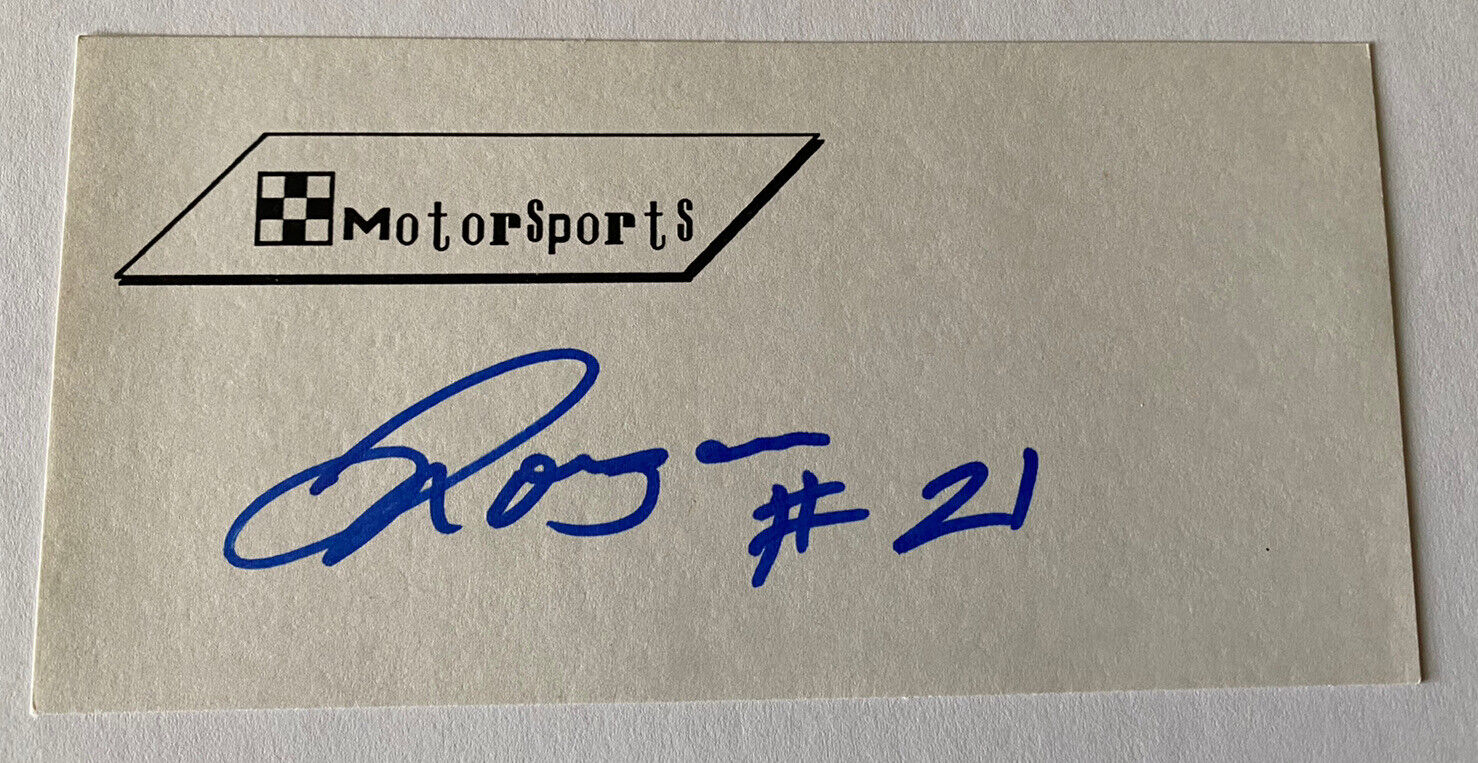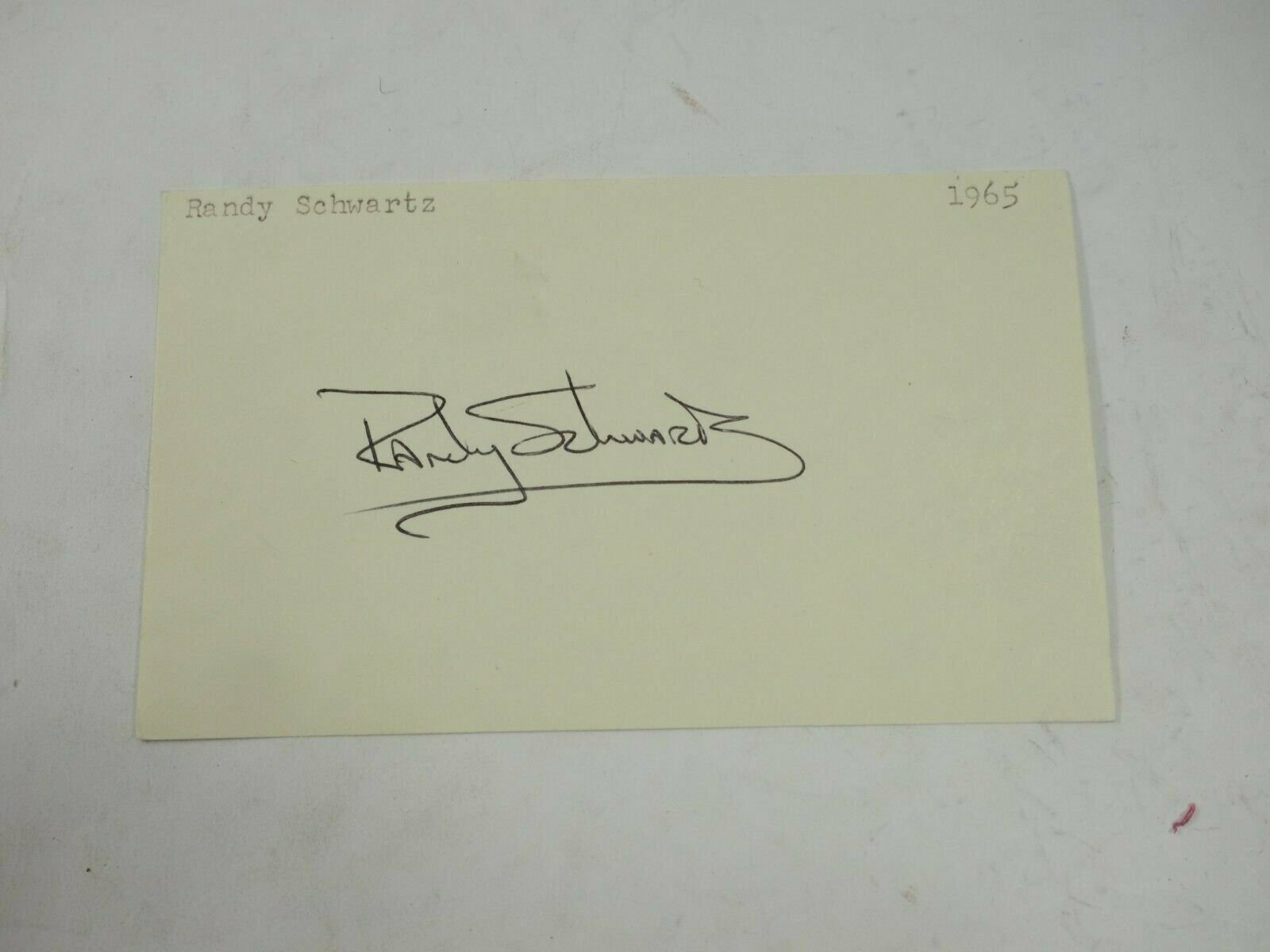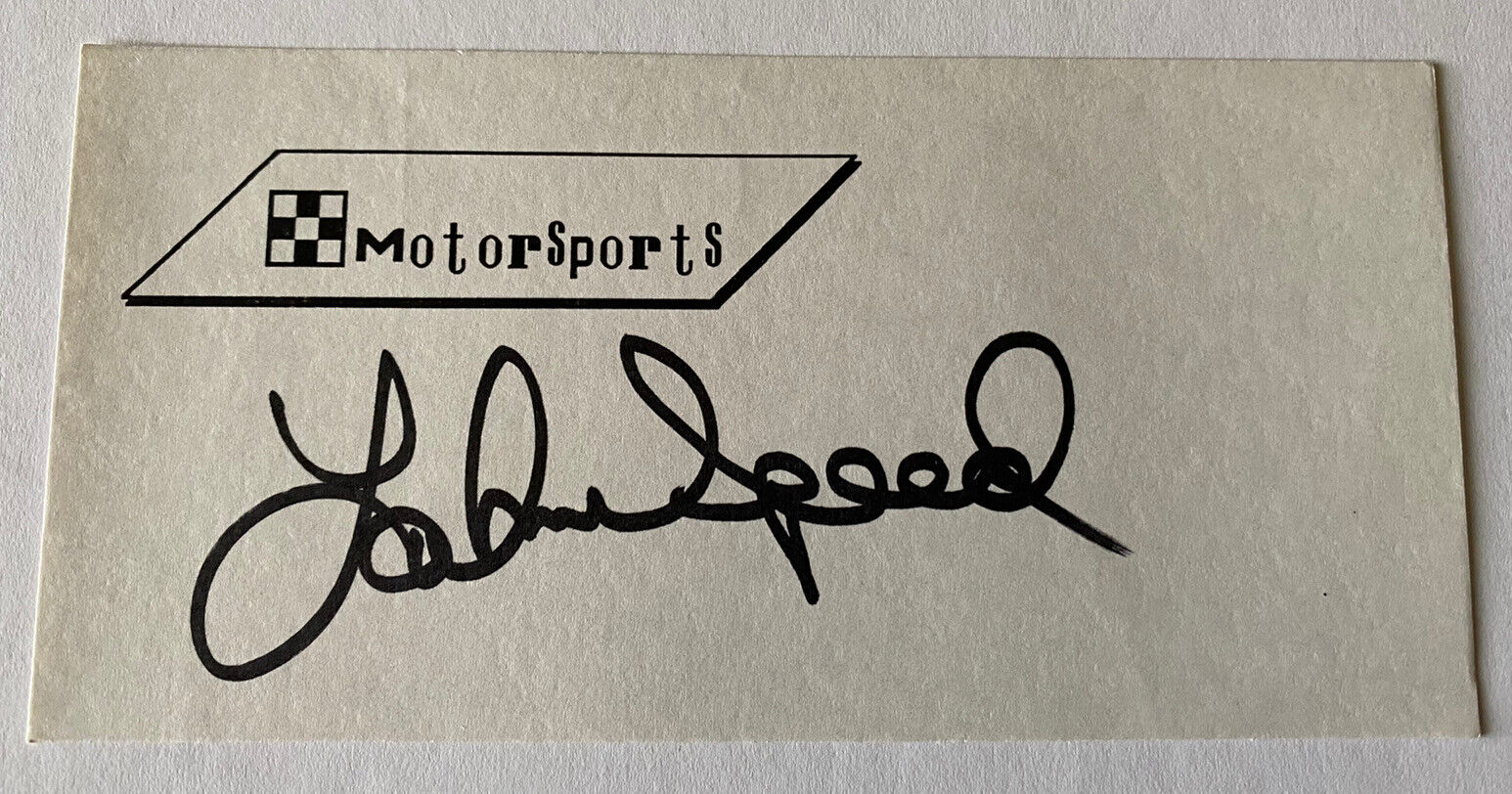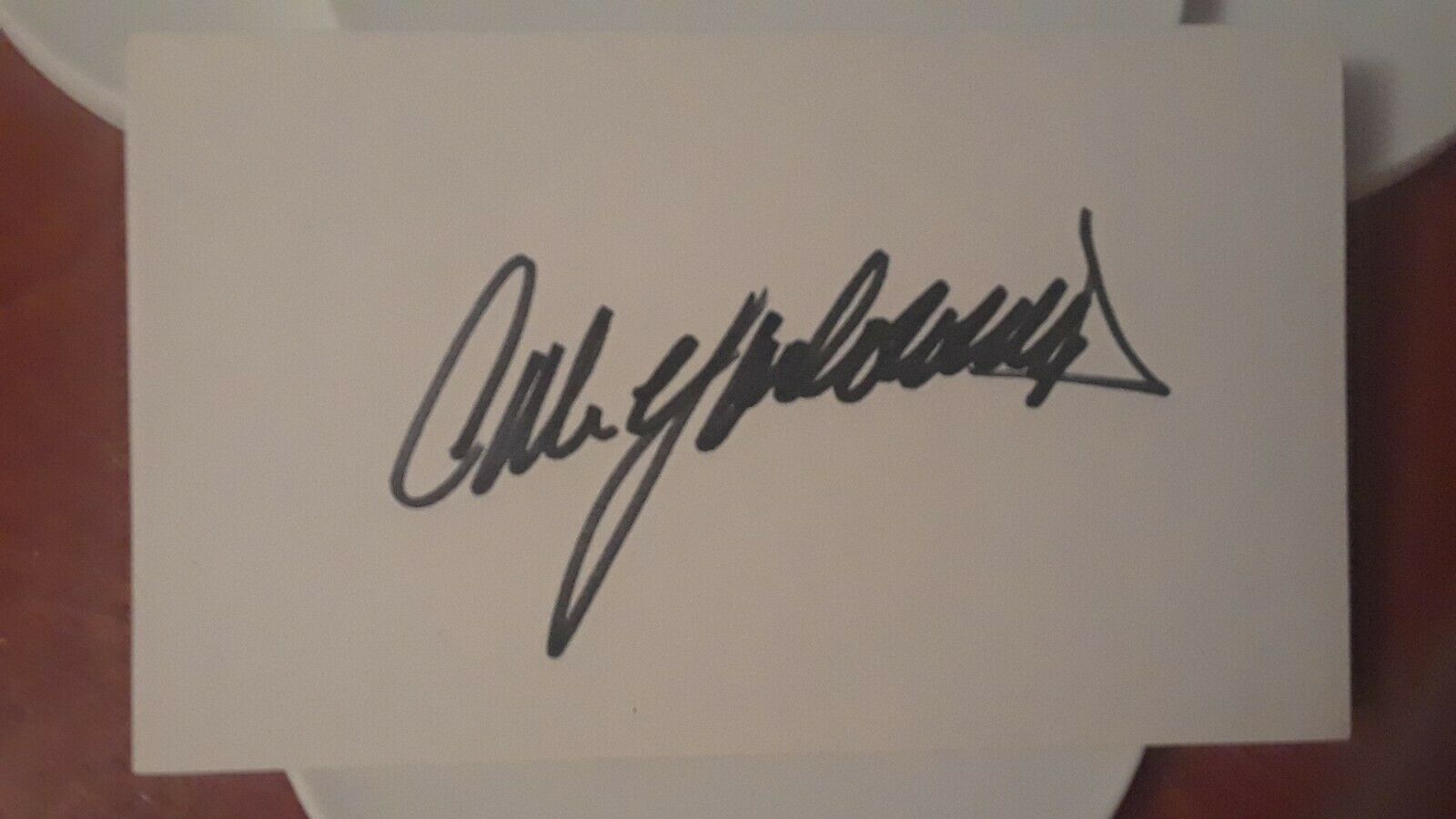-40%
NED JARRETT & TOM SNEVA 2 Hand Signed 3X5 INDEX CARD 'S - RACE CAR LEGENDS
$ 0
- Description
- Size Guide
Description
2 RACE CAR LEGENDS -NED JARRETT & TOM SNEVA 2 Authentic Hand Signed 3X5 INDEX CARDS . YOU GET 2 AUTOGRAPH INDEX CARD'S Hand Signed by Both
NED JARRETT & TOM SNEVA %100 Authentic Autographs . BOTH Autographs are BOLD & Looks Amazing
.
TOM SNEVA Wrote INDY "83" on his Card . NICE INSCRIPTION.
Both 3X5 CARDS Are
in Great condition & is VERY WHITE . Will be shipped SUPER FAST to you & will be Well packaged . I will ship to you .The SAME DAY you pay :) YES.... I even ship on Saturday . Payment MUST be made in 3 days or less after this listing ends ! In the 3 day Period . combined s&h is $ 1 Extra each additional listing . Check out my other Autographs & my Fantastic %100 Feedback :) Ad my STORE to your FAVORITES LIST . I do list new Low priced autographs EVERY DAY ! I will ad my COA Upon Request . Just message me at Checkout . Thank you :) Amanda
Jump to navigation
Jump to search
Ned Jarrett
Ned Jarrett working for MRN
Born
October 12, 1932
(age 88)
Conover, North Carolina
, U.S.
Achievements
1961
,
1965
Grand National Series
Champion
1957, 1958
Sportsman Division
Champion
1965
Southern 500
Winner
Led
Grand National Series
in wins 2 times (1964,
1965
)
Awards
Named one of
NASCAR's 50 Greatest Drivers
(1998)
Myers Brothers Memorial Award (1964, 1965, 1982, 1983)
National Motorsports Press Association Hall of Fame (1972)
North Carolina Sports Hall of Fame
inductee (1990)
International Motorsports Hall of Fame
inductee (1991)
Oceanside Rotary Club Stock Car Hall of Fame inductee (1992)
National Auto Racing Hall of Fame inductee (United States) (1992)
American Auto Race Writers & Broadcasters Association Hall of Fame inductee (1992)
Jacksonville, Florida Speedway Hall of Fame inductee (1993)
Motorsports Hall of Fame of America
inductee (1997)
[1]
Talladega Walk of Fame inductee (1997)
Hickory Metro Sports Hall of Fame inductee (2001)
NASCAR Hall of Fame
inductee (2011)
NASCAR
Cup Series
career
352 races run over 13 years
Best finish
1st (
1961
,
1965
)
First race
1953
(
Hickory
)
Last race
1966
American 500
(
Rockingham
)
First win
1959 (
Myrtle Beach
)
Last win
1965
Tidewater 300 (
Moyock
)
Wins
Top tens
Poles
50
239
35
Ned Jarrett (born October 12, 1932) is an American retired
race car
driver and two-time
NASCAR
Grand National Series
champion.
He was best known for his calm demeanor and he became known as "Gentleman Ned Jarrett". He is the father of former drivers
Glenn Jarrett
and
Dale Jarrett
.
Racing career
Jarrett was introduced to cars early in life: his father let him drive the family car to church on Sunday mornings when he was nine years old. Jarrett started working for his father in the sawmill by the time he was 12, but racing was what he wanted.
Ned drove in his first race in 1952 at
Hickory Motor Speedway
(North Carolina). He drove a Sportsman Series
Ford
that he co-owned with his brother-in-law, and finished tenth. This did not go over well with his father. His father told him he could work on cars but not drive them. Once, his brother-in-law was sick for a race and asked Jarrett to fill in for him. Jarrett used his brother-in-law's name and came in second in that race. That worked out so smoothly that Jarrett drove in a few more races under an assumed name, but was finally caught by his father after winning a race. His father told him if he was going to drive to at least use his own name.
Jarrett raced in his first Grand National Series race in the
1953 Southern 500
at
Darlington Speedway
. He was out after 10 laps after the engine leaked oil.
Jarrett was the 1955 track champion at
Hickory Motor Speedway
.
Jarrett came in second driving in the Sportsman Series in 1956, and won the 1957 and 1958 championships.
In 1959, he was looking to pursue a career in the Grand National Series. He purchased a
Junior Johnson
Ford for ,000. He did not have enough money to cover the check, so he waited until the bank closed to write the check, entered two races, and won them both to cover the cost of his car.
In 1960, he won five races, before winning the
1961 Grand National championship
with 22 top-five finishes and 34 top-ten finishes out of 46 races, with one win.
One indicator of the personal character of "Gentleman Ned" Jarrett is demonstrated by the decision to sell his 1961 (raced as No. 11) Chevrolet to
Wendell Scott
(the first NASCAR African American driver) who travelled from his Virginia home to Jarrett's shop on West "A" Street in Newton, NC, to take delivery of the Chevy Bel Air (raced the previous season) when Jarrett changed to Fords in 1962. Scott hauled the old blue coupe away on the back of an open trailer. Bobby Isaac frequented the shop on West A Street during this period when Bud Alman was the crew chief assisted by mechanic "John Carl" Ervin. Ervin later became crew chief to Jarrett and the No. 11 Fords.
Jarrett was once overheard talking with Alman and Ervin about the need to "run all the races" to win the championship. Schedules in those days sometimes included more than one race per week. Among the unique tracks of the early era was
Bowman Gray Stadium
in
Winston-Salem, North Carolina
, which was actually the area around the football field inside the Bowman Gray Stadium. The race schedule was difficult. The race teams were smaller, often having only one or two paid members. For example, Jarrett required significant effort in order to prepare for the
1963 Daytona 500
race when the latest
"fastback"
body was introduced by Ford. Alman and Ervin removed (air-chiseled) most of the body from a 1962 Ford "fatback" dirt car. Next, the two air-chiseled the new body from a 1963 fastback and fitted it onto the old body and chassis. This hybrid body became the car Jarrett drove to third in the "fastback Ford" sweep (top five positions) at Daytona that year.
In 1964, Jarrett joined team owner
Bondy Long
and with the support of
Ford
won 15 times (one of which was with
Charles Robinson
) but lost the championship to
Richard Petty
. Jarrett picked up his first superspeedway win, at
Atlanta Motor Speedway
.
In 1965, Jarrett became a star when he won 13 races and another Grand National championship. He placed among the top five in 42 of the 54 races that he ran.
The
1965 Southern 500
at
Darlington Raceway
was one of the wildest races in NASCAR history. Rookie driver
Buren Skeen
died after two cars ran into the side of his car in the early laps.
Sam McQuagg
was leading the race, when
Cale Yarborough
tried to muscle past McQuagg for the lead. Yarborough flew over the guardrail, rolled around six times, and ended up at the end of the parking lot by a light post. Yarborough waved to the crowd as he walked back to the pits. A video clip of the wreck was used on
ABC
's
Wide World of Sports
for several years. With 44 laps left,
Fred Lorenzen
and
Darel Dieringer
were fighting for the lead far ahead of Jarrett. Lorenzen's motor expired, and even before he could get into the pits Dieringer's motor started smoking too. Dieringer continued at a slower pace to finish third. The race was won by Jarrett by 14 laps and 2 car lengths
[3]
or 19.25 miles, which is the farthest margin of victory in NASCAR history (in terms of miles). Jarrett won the season's final race at
Dog Track Speedway
to clinch the championship; it ended up being his final NASCAR win.
[4]
In 1966, Jarrett raced in only 21 of 49 races, achieving eight top ten finishes. When Ford announced that they were withdrawing from NASCAR, Jarrett decided that it was time to retire at the age of 34. Jarrett is the only driver to retire as the NASCAR champion.
Ervin remained as a crew chief to the Jarrett family for years. Ervin later would become crew chief for Dale Jarrett in the No. 32 Busch car owned by DAJ racing.
Jarrett left racing and dealt in
real estate
and other business ventures before coming back to racing as a broadcaster. He also was the track promoter for Hickory Motor Speedway.
Jump to navigation
Jump to search
Tom Sneva
Sneva in the 1980s
Nationality
American
Born
June 1, 1948
(age 73)
Spokane, Washington
Achievements
1977
,
1978
,
1982–83
USAC Championship Car
champion
1983 Indianapolis 500
winner
Champ Car
career
128 races run over 13 years
Years active
1979
–
1992
Best finish
2nd (
1984
)
First race
1979
Arizona Republic / Jimmy Bryan 150
(
Phoenix
)
Last race
1992
Indianapolis 500
(
Indianapolis
)
First win
1980
XM Satellite Radio Indy 200
(
Phoenix
)
Last win
1984
Caesars Palace Grand Prix
(
Caesars Palace
)
Wins
Podiums
Poles
10
28
4
Thomas E. Sneva (born June 1, 1948) is a retired American race car driver, the winner of the
Indianapolis 500
in
1983
. He primarily raced in
Indy cars
, and was named to the
Motorsports Hall of Fame of America
in 2005.
A former math teacher from
Spokane, Washington
, Sneva's win at Indianapolis followed several runner-up finishes and notable crashes. Nicknamed "The Gas Man,"he was an outstanding qualifier, winning the pole position three times (
1977
,
1978
,
1984
). He was also the fastest qualifier on a fourth occasion in
1981
, but because of qualifying rules did not start the race from the pole position.
Sneva won two consecutive
USAC
National Championships for Indy cars in 1977 and 1978.
